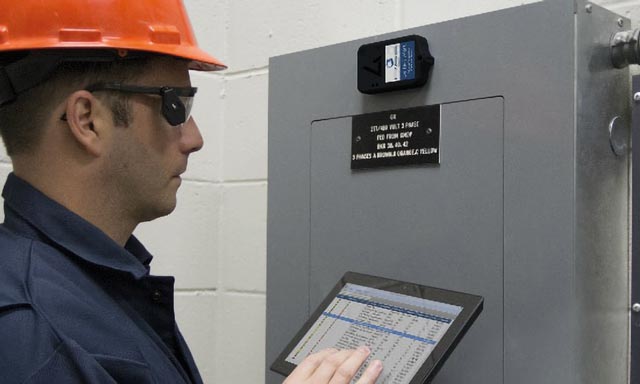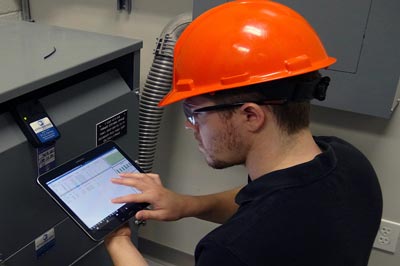
The critical importance of electrical power to every aspect of our world cannot be exaggerated. It must be generated and distributed effectively to users, and any disruption in that process means loss of operations, money, and in extreme cases, life. Therefore the reliability of electrical power creation and distribution must be continuously safeguarded and improved.
Adopting a “Monitor, Inspect, and Manage” approach is a proactive way to avoid the concerns at hand by maximising the value of workforce time and skill by applying condition-based reliability technologies. These reliability technologies and electrical safety maintenance devices can be specified at the initial design/build stage or retrofitted to existing equipment through a simple and inexpensive process.
Monitor
With the use of a wireless temperature monitoring system, asset conditions can be continuously collected, trended, and assessed. Monitors feed data through a gateway to software and apps, allowing the information to be continuously accessed from workstations and mobile devices. When the asset condition data exceeds the custom parameters, alarms can notify electrical technicians of a possible issue that may require inspection. Limiting human interaction with equipment only to instances where confirmation inspections of potential faults are deemed necessary minimises workers’ risk and eliminates the human-error threat to asset functionality.
Inspect
Once the wireless monitoring system notifies technicians of a possible problem with a transformer or other piece of electrical equipment, the use of pre-installed inspection windows on the asset allows a safe, efficient method of inspecting and assessing any possible issue during an energised condition. These were originally solely designed for thermographic inspections using infrared cameras, but advances in manufacturing have led to the inclusion of ports that allow for ultrasound and partial discharge technologies to be incorporated into the inspection. Visual, infrared, and ultrasound inspections can be done simultaneously by a single employee.
Additionally, this design protects inspectors from arc flash/ electrocution risk, removes the need for bulky and expensive PPE, and allows the inspection to be accomplished more efficiently.
Manage
The data collected during inspection can be stored through intelligent asset management tags attached to the inspection windows. From the asset location, information can be transmitted into a dashboard system accessible from workstations and mobile devices.
Customisable routes can be established before, and condition reports generated after data analysis to increase efficiency further. These aspects allow managers to assess operations and decide how best to increase mean time between failure (MTBF).

Proper Training
One major issue facing many industries is a coming wave of retirements from the workforce, with fewer new workers entering the industry than the pending need created by this exodus. As the electrical industry expands worldwide, creating the need for a larger workforce, the problem is multiplied. The only way to succeed is to capitalise on reliability technologies designed into the system that allow the industry to do more with less.
Shifting to an engineered reliability system for the electrical maintenance team means training new and veteran staff alike. With “Monitor, Inspect, Manage,” the use of technology allows single individuals to accomplish inspection tasks with minimal training. Specialised skills of electrical-focused staff can be used for necessary maintenance/repair activities.
Another Covid-era issue with learning is that most educational institutions have adopted online models. The electrical world can benefit from adding this type of education and certification to on-the-job training programmes. Such online systems offer on-demand educational and training resources that teach the use of these specific reliability technologies. The streamlined workflow means that the skill requirements can be minimised to particular tasks.
Conclusions
Monitoring critical electrical power assets remotely cuts down on technicians’ routine tasks by providing around-the-clock coverage. When an alarm notification is received, inspection windows allow an individual technician to easily do visual, infrared, ultrasound, and partial discharge assessments of the energised equipment. The data collected on the asset can then be stored, trended, and analysed through the management software. This process increases the mean time between failure by allowing for planned shutdown and maintenance only when it is necessary.
+44 (0) 7973-337-406 | m.riccio@iriss.com | www.iriss.com

